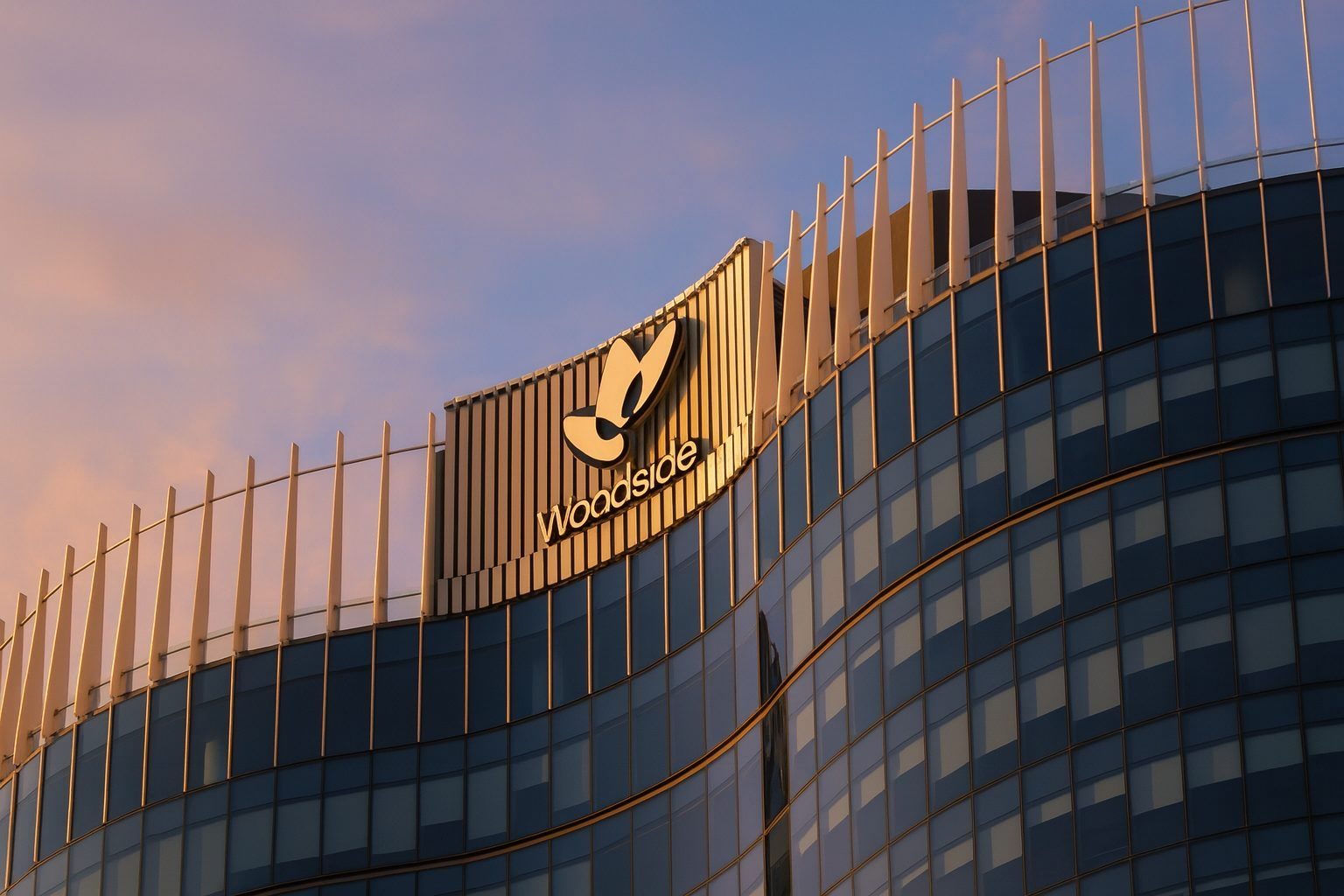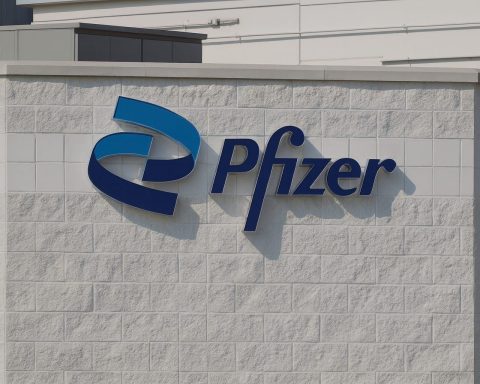Woodside Energy Group Ltd (ASX:WDS) traded slightly softer on the ASX on Thursday, 27 November 2025, as investors weighed fresh industrial-relations risk at its Pluto 2 expansion against long‑dated growth from new LNG agreements and a still‑generous dividend yield.
Woodside Energy share price on 27 November 2025
As of Thursday, 27 November 2025, Woodside Energy Group Ltd (WDS) was trading around A$25.12, down modestly from Wednesday’s close of A$25.27. That puts the stock in the middle of its day range of A$25.05–25.35 and within a 52‑week band of roughly A$18.61–27.30. [1]
At this price, Woodside’s equity value sits near A$47–48 billion, with data providers estimating a dividend yield of about 6.6–7% based on recent payouts and analyst forecasts. [2]
Short‑term performance is mixed:
- Over the past month, WDS has gained just over 2%, according to Simply Wall St. [3]
- Over the last trading day (26 November), the stock rose 0.64% to A$25.27, but it is still down roughly 6% over the past two weeks, highlighting choppy sentiment. [4]
- Over the past year, Woodside has delivered a total shareholder return of around 10–11%, helped by hefty dividends. [5]
Technical indicators are far from conclusive. TradingView shows the stock up about 0.6% in the last 24 hours and notes a one‑week “buy” signal but a one‑month “sell” rating, reflecting a short‑term bounce within a still‑hesitant trend. [6] Investing.com’s technical read‑through is more cautious, flagging an overall daily “Sell” setup. [7]
For day‑traders, that adds up to a range‑bound session today, with the share price moving modestly lower as the market waits to see whether new LNG growth offsets rising labour and climate‑policy risks.
Key news shaping Woodside on and around 27 November 2025
Although there is no price‑sensitive ASX announcement from Woodside today, several major news items from the last few days are driving the narrative as of 27 November 2025:
- A strike ballot has been approved for workers on the Pluto 2 LNG project. [8]
- Woodside and Timor‑Leste have signed a co‑operation agreement on a Timor‑based Greater Sunrise LNG concept, targeting first LNG in the 2030s. [9]
- Analysts and valuation services are highlighting modest upside in WDS, but with execution and regulatory risk firmly in focus. [10]
Let’s unpack each of these.
1. Pluto 2 strike vote raises near‑term execution risk
On 25 November, Australia’s Fair Work Commission approved a request from unions to hold a strike ballot at Woodside’s under‑construction Pluto LNG 2 project in Western Australia. [11]
Key details:
- The ballot must be held by 4 December 2025; if workers vote in favour, industrial action could begin before year‑end. [12]
- The dispute centres on pay and conditions for construction workers employed by contractor Bechtel. Unions argue that Pluto 2 staff are paid about 30% less than peers on Chevron’s Wheatstone project. [13]
- Pluto Train 2 is designed for around 5 million tonnes per annum of LNG output and is about 91% complete, according to a recent GuruFocus summary of Woodside’s disclosures. [14]
- The project is targeting first LNG cargo in the second half of 2026, in line with guidance reiterated in Woodside’s Q3 2025 report. [15]
A prolonged strike could:
- Delay start‑up and push out cash flows.
- Increase project costs if Woodside or Bechtel must sweeten pay conditions or reschedule work.
- Test Woodside’s ability to manage industrial relations across a growing global project portfolio.
For now, the market reaction appears measured rather than panicked. Pluto 2 is close to completion, and investors seem to be assuming a negotiated settlement, but today’s softer share price suggests they are starting to price in a non‑zero risk of disruption.
2. Greater Sunrise: Timor‑based LNG concept moves forward
In more strategic news, the government of Timor‑Leste and Woodside Energy this week announced a co‑operation agreement to study a Timor‑based LNG development for the long‑stalled Greater Sunrise gas fields. [16]
From LNG Industry and Reuters reporting, along with official statements, the agreement includes: [17]
- A concept for a greenfield LNG plant of roughly 5 mtpa in Timor‑Leste.
- A domestic gas facility to feed local industry and power generation.
- A helium extraction plant, leveraging the value of helium, which is critical for sectors like semiconductors and medical imaging.
- A target window for first LNG between 2032 and 2035, subject to concept selection, regulatory frameworks and final investment decisions.
The deal is symbolically important because:
- It reflects a thaw in the long‑running dispute over whether gas should be piped to Darwin in Australia (Woodside’s historical preference) or processed in Timor‑Leste, which wants more domestic value‑add. [18]
- It gives Timor‑Leste a pathway to industrialisation and energy security, if the project proves feasible.
- It gives Woodside a new, long‑dated option in the Timor Sea, complementing nearer‑term growth from Scarborough, Trion and Louisiana LNG.
However, major uncertainties remain: the economics of a deepwater pipeline across the Timor Trough, the fiscal and regulatory regime, and potential financing challenges for a new LNG plant in a world where many analysts foresee LNG oversupply into the 2030s. [19]
For investors watching WDS today, Greater Sunrise is not yet a numbers story — it’s a strategic optionality story that could become material only if the partners can prove a competitive cost structure.
3. Louisiana LNG and the Saudi Aramco angle
On 14 November, Reuters reported that Saudi Aramco is expected to sign two US LNG deals during the crown prince’s visit to Washington, including a potential agreement to take a stake in Woodside’s Louisiana LNG project and secure up to 2 mtpa of offtake. [20]
According to that report and Woodside’s own half‑year disclosures: [21]
- Louisiana LNG is a three‑train, 16.5 mtpa export project targeting first LNG in 2029.
- Woodside took final investment decision (FID) in April 2025 and sold a 40% stake in the infrastructure entity to Stonepeak for US$5.7 billion, with Stonepeak expected to fund around 75% of project capex through 2026. [22]
- The company plans a second phase that would lift Louisiana LNG’s capacity to 27.5 mtpa, making it one of the largest US export facilities. [23]
A deal with Aramco would be significant because it could:
- Bring in another deep‑pocketed partner, reducing risk on what Woodside CEO Meg O’Neill has described as the company’s highest‑return growth project. [24]
- Lock in additional long‑term offtake, supporting project bankability and revenue visibility.
- Underscore Woodside’s ambition to be a global LNG “powerhouse” with scale in both the Atlantic and Pacific basins. [25]
For WDS shareholders looking at the stock today, Louisiana LNG is one of the core pillars of the 2030s growth story that helps justify paying a mid‑single‑digit earnings multiple for what is still a carbon‑heavy portfolio.
4. 2025 results so far: high production, strong cash, big dividends
Half‑year 2025 snapshot
Woodside’s Half‑Year 2025 report, released in August, set the tone for the current year: [26]
- Production: 99.2 million barrels of oil equivalent (MMboe), up 11% year‑on‑year, or about 548 kboe/d.
- Unit production costs: down to US$7.7 per boe, reflecting strong performance from Sangomar and the broader portfolio.
- Operating revenue: US$6.59 billion, up 10% vs H1 2024.
- Net profit after tax: US$1.316 billion, with underlying NPAT of US$1.247 billion.
- Interim dividend:53 US cents per share, fully franked, equating to an 80% payout ratio of underlying NPAT and an annualised yield of about 6.9% based on the 30 June share price.
Woodside also highlighted excellent operational performance:
- The Sangomar oil project in Senegal produced about 100 kbbl/d (gross) with high reliability and generated nearly US$1 billion in revenue in just the first half. [27]
- Combined operated LNG plant reliability was around 96%, supporting stable cash generation.
Q3 2025 momentum
The Third‑Quarter 2025 report, published in October, showed that momentum largely continued into the second half: [28]
- Quarterly production reached 50.8 MMboe, up 1% on Q2.
- Full‑year 2025 production guidance was upgraded to 192–197 MMboe (from 188–195), while unit production cost guidance improved to US$7.6–8.1/boe.
- The Scarborough Energy Project was 91% complete, with first LNG still targeted for 2H 2026.
- The Beaumont New Ammonia project in Texas was 97% complete, aiming for first ammonia from late 2025 and lower‑carbon ammonia once CCS comes online. [29]
- The Trion oil project offshore Mexico was 43% complete and remains on track for first oil in 2028. [30]
- The Louisiana LNG project was about 19% complete, with Train 1 at 25% and targeting first cargo in 2029. [31]
Woodside also received final environmental approval from the Australian government for the North West Shelf Project Extension, enabling operations beyond 2030 and opening the door to processing third‑party gas through the Karratha Gas Plant. [32]
The upshot: heading into today’s session, Woodside is delivering on its 2025 operational and financial guidance, which helps underpin the high dividend and supports the investment case despite governance and emissions debates.
5. Strategy after Capital Markets Day: more LNG, fewer green experiments
At its 2025 Capital Markets Day on 5 November, Woodside laid out an aggressive growth plan to thrive through the energy transition while still leaning heavily on fossil fuels. [33]
Key messages, reinforced by a Reuters summary of the event, include: [34]
- Woodside expects oil and gas sales to climb about 50% by 2032, from 203.5 MMboe in 2024 to roughly 300 MMboe per year.
- Management is targeting around US$9 billion of annual free cash flow by 2032, implying about a 6% compound annual growth rate in sales and cash flow from 2024.
- The company’s own projections suggest more than 90% of production in the 2030s will still be fossil fuels, as it scales back most green hydrogen and new‑energy initiatives and focuses on core LNG and oil projects.
- Scarborough, Trion, Beaumont New Ammonia and Louisiana LNG are presented as flagship projects that will drive growth and support a planned 50% increase in dividend per share from 2032. [35]
At the same time, Woodside has exited several hydrogen ventures, including its H2OK project in Oklahoma and H2TAS in Tasmania, booking impairments and citing cost escalation and weaker‑than‑expected demand. [36]
This pivot has drawn sharp criticism from environmental and energy‑transition analysts:
- A November 12 report by the Institute for Energy Economics and Financial Analysis (IEEFA) labels Woodside’s proposed Browse gas project “risky and redundant”, arguing that it is high‑cost, high‑emissions and unlikely to be competitive either domestically or in export markets. [37]
- IEEFA estimates Browse gas could cost more than four times existing domestic gas in Western Australia and significantly more than Qatari LNG in key Asian markets, raising the risk of stranded assets and higher domestic prices. [38]
- Separately, the World Socialist Web Site has attacked the federal government’s approval of a 40‑year extension of the North West Shelf project, highlighting potential lifetime emissions of up to 4.3 gigatonnes of CO₂‑equivalent and impacts on Indigenous rock art near the Karratha Gas Plant. [39]
For investors, this strategic backdrop means Woodside is positioning itself as a high‑yield, growth‑oriented LNG and oil producer, but with elevated long‑term carbon and regulatory risk compared with peers that are diversifying more aggressively into renewables.
6. How the market is valuing Woodside today
Several fresh pieces of analysis published in the last 24–48 hours give a sense of how the market is thinking about WDS on 27 November 2025.
Analysts’ price targets and upside
Investing.com aggregates broker forecasts and currently shows an average 12‑month price target of about A$27.74 for WDS, implying roughly 10–11% upside from current levels and an overall “Buy” rating from the analyst consensus. [40]
ValueInvesting.io’s relative valuation model goes further, estimating a fair value of A$31.66 per share as of 27 November 2025, based on peer P/E multiples. With the latest price at about A$25.27, that suggests upside of around 25%, with a fair‑value range stretching from A$29.02 to A$64.15 depending on assumptions. [41]
Independent valuation narratives
A new article from Simply Wall St, published on 26 November, notes that: [42]
- Woodside shares have moved just over 2% higher over the past month, despite swings in the broader energy sector.
- The one‑year total shareholder return is about 10.8%, reflecting steady operations and hefty dividends.
- Their “narrative fair value” sits at about A$27.61, vs a recent price around A$25.27, framing WDS as roughly 8–10% undervalued rather than deeply mis‑priced.
- They caution that the current valuation already assumes smooth execution of large growth projects such as Scarborough, Pluto Train 2 and Louisiana LNG, with limited room for major cost overruns or new regulatory headwinds.
In other words, valuation tools broadly agree that WDS offers moderate upside plus a high yield, but much of that value depends on delivering mega‑projects on time and on budget, avoiding prolonged industrial action, and navigating increasingly complex climate policy.
7. What today’s setup means for investors
Putting it all together as of 27 November 2025:
- Share price: WDS is trading near A$25, off recent highs but comfortably above its 52‑week low, with volatility driven more by project‑specific news and global LNG sentiment than by earnings disappointments. [43]
- Income profile: The stock still offers a headline yield around the mid‑single digits to high‑single digits, supported by strong cash flows and a payout policy that has so far favoured generous dividends. [44]
- Growth drivers: Scarborough, Trion, Beaumont and especially Louisiana LNG underpin Woodside’s plan to lift sales ~50% by 2032 and reach around US$9 billion of free cash flow annually. [45]
- Near‑term risks: The Pluto 2 strike ballot is the main immediate concern, with potential to delay a major project that is almost complete. Any escalation could weigh on sentiment and push out cash‑flow timelines. [46]
- Structural risks: Longer‑term, Woodside faces criticism over emissions‑heavy projects such as Browse and the extended North West Shelf, alongside the strategic risk of doubling down on LNG just as parts of the world accelerate renewables and electrification. [47]
For readers following Woodside on Google News or Discover today, the story is one of balance:
- A globally significant LNG player with strong 2025 results, ambitious 2030s targets and a high dividend stream.
- A company simultaneously facing labour disputes, decarbonisation scrutiny and project‑execution risk across multiple continents.
As always, this article is general information only and is not personal investment advice. Anyone considering buying or selling WDS should assess their own financial situation and risk tolerance, and, if needed, consult a licensed financial adviser.
References
1. www.investing.com, 2. www.investing.com, 3. simplywall.st, 4. stockinvest.us, 5. simplywall.st, 6. www.tradingview.com, 7. www.investing.com, 8. www.reuters.com, 9. www.lngindustry.com, 10. simplywall.st, 11. www.reuters.com, 12. www.reuters.com, 13. www.gurufocus.com, 14. www.gurufocus.com, 15. www.woodside.com, 16. www.lngindustry.com, 17. www.lngindustry.com, 18. www.reuters.com, 19. ieefa.org, 20. www.reuters.com, 21. www.reuters.com, 22. www.woodside.com, 23. www.reuters.com, 24. www.reuters.com, 25. www.woodside.com, 26. www.woodside.com, 27. www.woodside.com, 28. www.woodside.com, 29. www.woodside.com, 30. www.woodside.com, 31. www.woodside.com, 32. www.woodside.com, 33. www.woodside.com, 34. www.reuters.com, 35. www.woodside.com, 36. www.woodside.com, 37. ieefa.org, 38. ieefa.org, 39. www.wsws.org, 40. www.investing.com, 41. valueinvesting.io, 42. simplywall.st, 43. www.investing.com, 44. www.woodside.com, 45. www.reuters.com, 46. www.reuters.com, 47. ieefa.org










